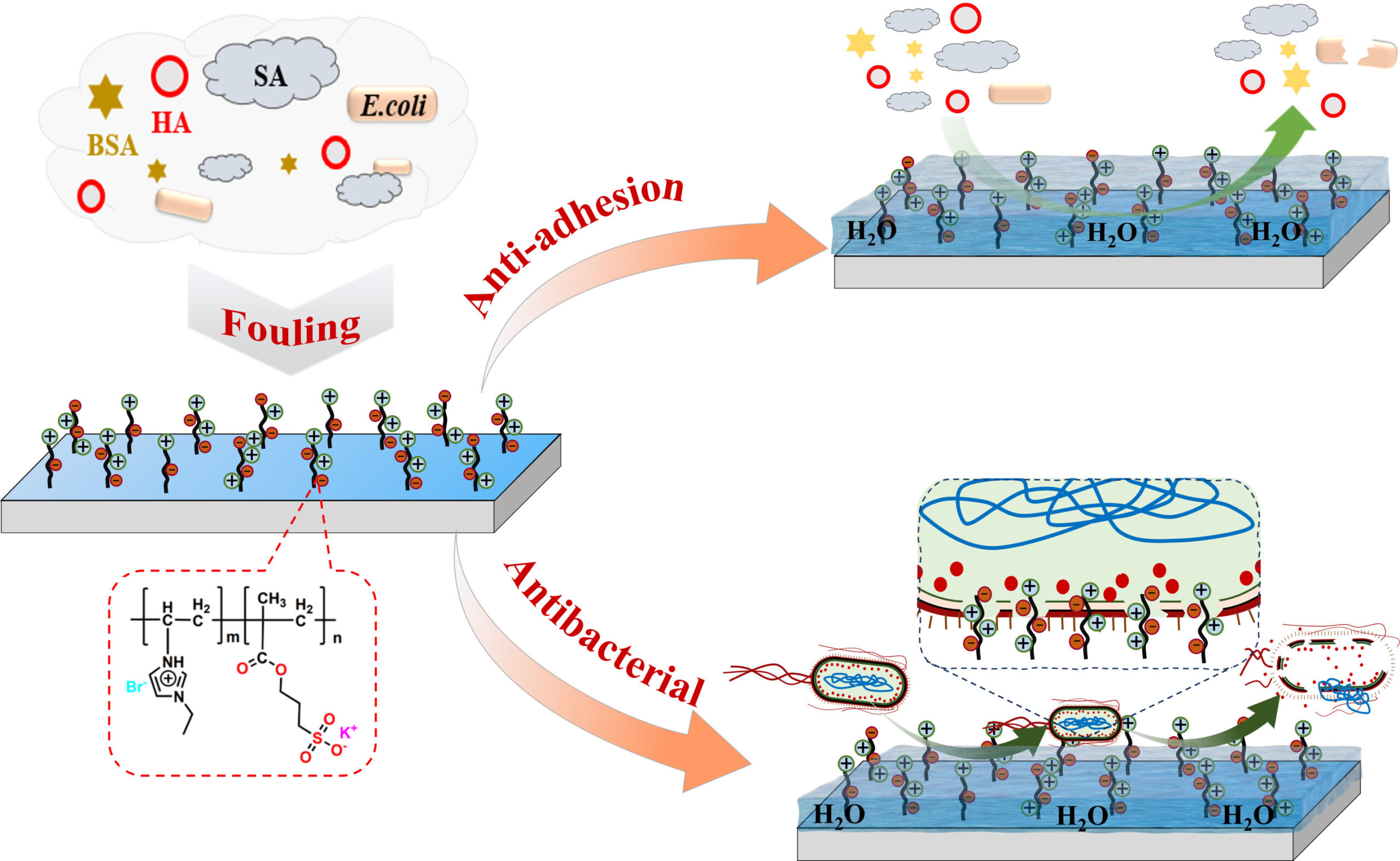A research team, led by Professor Wan Yinhua from the Institute of Process Engineering (IPE) of the Chinese Academy of Sciences, has developed a groundbreaking dual-functional reverse osmosis (RO) membrane designed to address long-standing challenges in water purification and desalination technologies. This innovative membrane boasts enhanced antibacterial and antiadhesion properties, making it a promising solution for various applications, including water purification, seawater desalination, and high-salinity wastewater treatment. The team’s findings were recently published in the Journal of Membrane Science.
Addressing the Challenge of Membrane Fouling
Reverse osmosis is widely used in water treatment systems due to its ability to effectively remove dissolved salts, organic compounds, and other impurities from water. However, one of the most significant challenges facing RO technology is membrane fouling, which leads to increased energy consumption, higher operational costs, and reduced membrane lifespan. Fouling typically results from the accumulation of organic matter, inorganic salts, and microorganisms on the membrane surface. Among these, biofouling—caused by microbial growth—accounts for over 45% of the problem, making it a critical issue that needs addressing.
Biofouling occurs when microorganisms, such as bacteria and algae, proliferate on the membrane surface, forming biofilms that interfere with the membrane’s efficiency. Effective removal of these biofilms is difficult, particularly because traditional pretreatment methods are often not sufficient to prevent the rapid growth of microorganisms. As a result, RO systems experience a decline in membrane performance, requiring frequent cleaning and maintenance.
The Development of the Dual-Functional Membrane
To combat these challenges, the research team led by Prof. Wan Yinhua focused on developing a membrane with dual functionalities: antibacterial properties and antiadhesion capabilities. The solution was achieved by grafting both ionic liquid and sulfonic acid monomers onto the surface of the RO membrane. This was accomplished using a straightforward redox radical polymerization process, which allows for the modification of the membrane without the need for complex or costly procedures.
The resulting dual-functional membrane demonstrates a broad spectrum of antibacterial activity and resistance to fouling from various contaminants. The inclusion of ionic liquid monomers provides the membrane with inherent antibacterial properties, while the sulfonic acid groups improve the membrane’s surface charge and hydrophilicity. These surface modifications prevent the adhesion of fouling agents such as proteins, organic matter, and microorganisms, thereby improving the membrane’s resistance to both biofouling and organic fouling.
Enhanced Membrane Performance
One of the key benefits of this innovation is that it overcomes the “trade-off” effect often seen in traditional membrane technology. In conventional RO membranes, there is a balance that must be struck between maintaining high flux (the rate at which water passes through the membrane) and ensuring high salt rejection. Increasing flux typically leads to a decrease in salt rejection, which compromises the effectiveness of the water treatment process.
However, the dual-functional RO membrane developed by Prof. Wan and his team does not suffer from this trade-off. The membrane exhibits significantly increased water flux while maintaining a high level of salt rejection. This means that the membrane is able to process more water without sacrificing the purity of the output, making it a more efficient solution for large-scale water treatment systems.
The improved hydrophilicity of the membrane also contributes to its superior performance. Hydrophilic surfaces are better at resisting the adhesion of fouling agents because they tend to repel organic molecules, reducing the likelihood of membrane blockage. Additionally, the smoother surface of the membrane minimizes the attachment of contaminants, making it easier to maintain over time.
Antibacterial Activity and Long-Term Efficacy
In addition to its resistance to fouling, the membrane demonstrated strong antibacterial properties. Tests showed that the membrane exhibited significant antibacterial activity against common pathogens such as Escherichia coli (E. coli) and Staphylococcus aureus (S. aureus), which are often found in contaminated water sources. This antibacterial action is attributed to the polyionic liquid segments grafted onto the membrane’s surface, which are known for their ability to inhibit bacterial growth.
The researchers also found that the membrane maintained its antibacterial activity even after undergoing cleaning processes. For example, after alkaline washing—a standard cleaning method for RO membranes—the membrane’s flux was fully restored, and it continued to exhibit a 99.8% bactericidal rate against E. coli. This sustained antibacterial effect is crucial for ensuring the long-term performance and hygiene of RO systems, reducing the need for frequent chemical treatments or replacement of membranes.
Practical Applications and Future Implications
The dual-functional RO membrane developed by Prof. Wan and his team offers several advantages for real-world applications. Its enhanced water flux, reduced fouling, and sustained antibacterial properties make it an ideal candidate for various water treatment systems, including municipal water purification, seawater desalination, and industrial wastewater treatment. The ability to effectively remove microorganisms and organic contaminants while maintaining high performance can help reduce the energy consumption and operational costs associated with membrane-based water treatment technologies.
Furthermore, the membrane’s resistance to fouling from a wide range of contaminants—such as bovine serum albumin, humic acid, and sodium alginate—demonstrates its versatility and potential for use in different water sources, including those with high levels of organic or biological pollutants. This could have significant implications for regions facing water scarcity or pollution challenges, where efficient and sustainable water treatment solutions are urgently needed.
The ability to restore membrane flux after cleaning is also a crucial factor in extending the lifespan of the membrane, thereby reducing the frequency of replacement and further lowering maintenance costs. This makes the dual-functional membrane a more cost-effective and environmentally friendly option in comparison to traditional RO membranes, which often require more frequent replacement and complex cleaning procedures.
Reference: Mingjiao Lang et al, Dual-functional reverse osmosis membranes: A novel Approach to Combat biofouling with enhanced antibacterial and Antiadhesion properties, Journal of Membrane Science (2025). DOI: 10.1016/j.memsci.2025.123699
Think this is important? Spread the knowledge! Share now.
